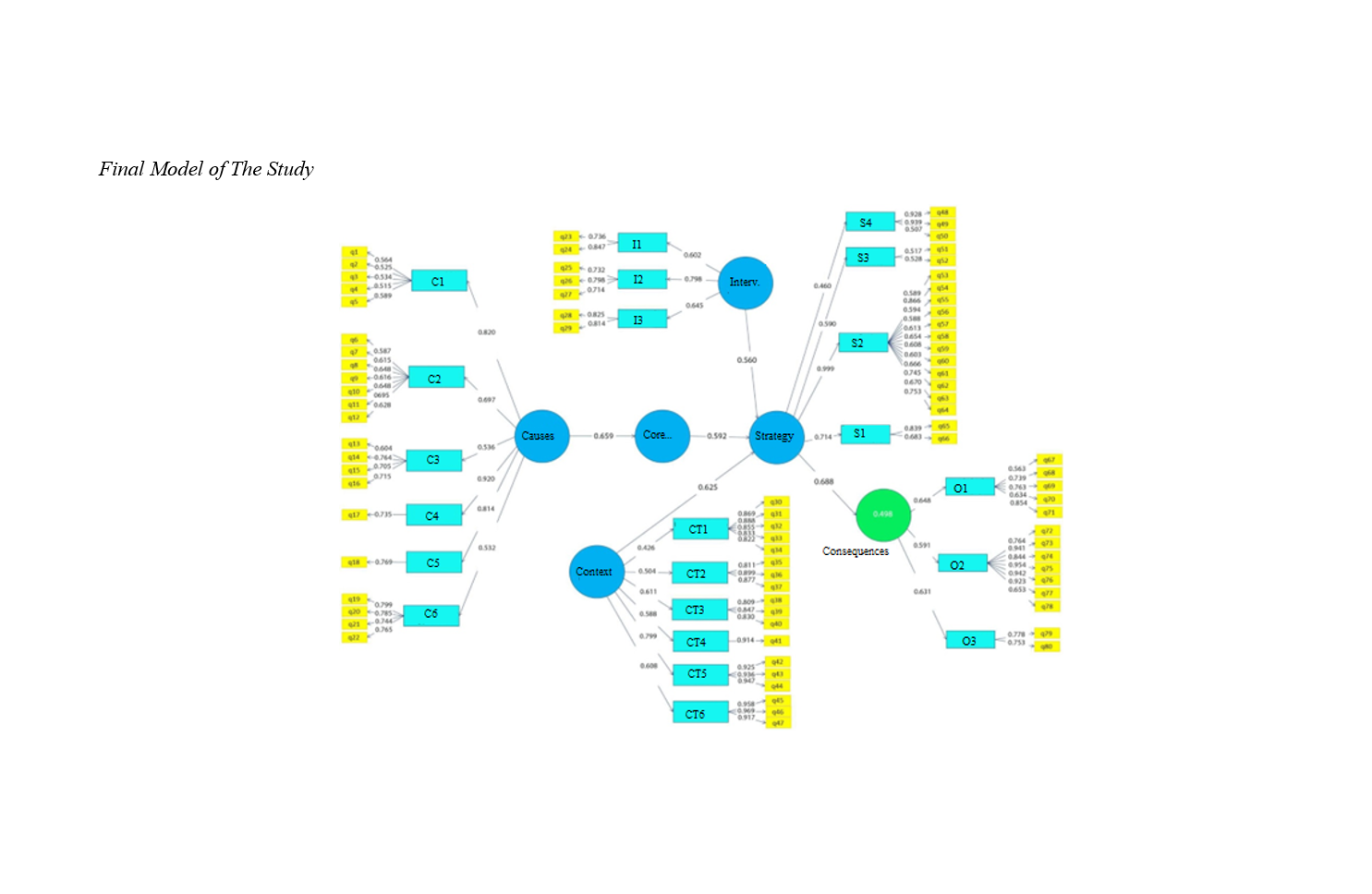Modeling Talent Management in an Organization Using Structural Equation Method (Management of Education and Training in Basra Province)
Keywords:
Talent management, Modeling, Structural equationsAbstract
Objective: The purpose of the current research was to present a model for implementing talent management in an organization (Management of Education and Training in Basra Province).
Methodology: This study is an applied research and methodologically a mixed (qualitative-quantitative) research. The statistical population comprised of 250 managers and employees of the Education and Training department of Basra Province, and Cochran's formula was used for sampling, resulting in a sample size of 151 individuals. The sampling method was random availability. The model in question was refined through the Delphi technique across several criteria including: central conditions, causal conditions, contextual conditions, intervening variables, strategies, and outcomes, and eventually reached a consensus on 23 criteria and 80 sub-criteria. For modeling, structural equations and partial least squares were used via the SMART-PLS software.
Findings: The research results showed that the model for implementing talent management involves 6 causal conditions, 6 contextual conditions, 3 intervening factors, and 4 strategies, ultimately encompassing 3 major outcomes which, in order of priority, include individual outcomes (regular employees), inter-organizational outcomes, and organizational outcomes.
Conclusion: A reward system should be used to enhance the performance of employees and teachers, and appreciation for talents must be acknowledged. Lack of appreciation and the absence of appropriate rewards lead to a decline in productivity. Therefore, an appropriate system for appreciation and rewards must be developed. The employment examination for employees and teachers has its own conditions and complexities, and these must be optimized. Also, the education department's policy on human resources employment has not been very scientific or ethical, and to improve this, plans must be developed and implemented because primarily, appointments of managers are based on relationships, which requires a thorough review and drafting of criteria for appointing managers.
Downloads

Downloads
Additional Files
Published
Submitted
Revised
Accepted
Issue
Section
License
Copyright (c) 2024 Alaa Hafedh Salman Al-Oda, Mehrdad Sadeghi, Riyaz Hossein Abais Al-Murshidi, Saeed Sharifi (Author)

This work is licensed under a Creative Commons Attribution-NonCommercial 4.0 International License.















